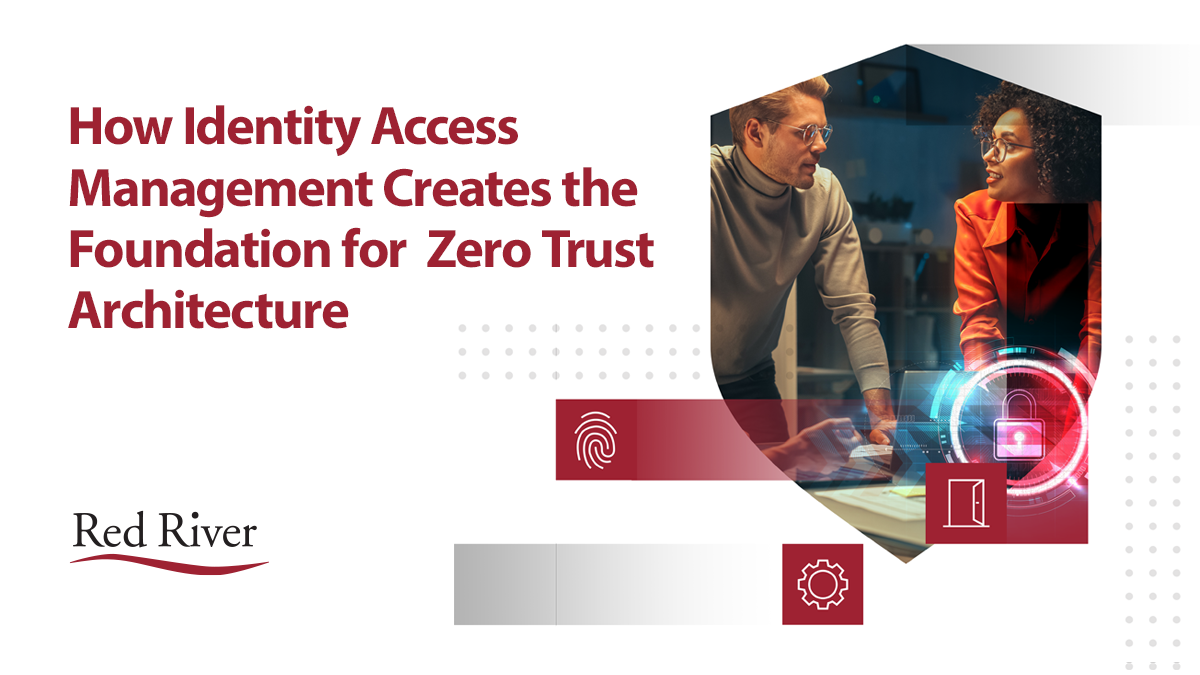
Identity Access Management Blog Series – Part 1: The Critical Role of IAM in Zero Trust Implementation
Zero Trust Architecture has emerged as one of the most robust approaches to protecting organizational assets. Unlike traditional security models that rely heavily on perimeter defenses, zero trust operates on the principle of “never trust, always verify.” At the core of this framework lies Identity and Access Management (IAM). IAM is not just a complementary component, but the foundational pillar upon which any successful zero trust implementation must be built. In this blog series we’ll break down the specific aspects of IAM and explore its impact on Zero Trust adoption.
What is Identity and Access Management?
IAM is a fundamental element under the Zero Trust umbrella. It is the first and most crucial component that organizations must address when beginning their Zero Trust journey. Without establishing robust IAM capabilities first, all other zero trust efforts risk failure.
IAM serves as the essential control mechanism ensuring every user, device, application and service proves their identity before accessing resources. This verification process isn’t a one-time event but continues throughout the session, especially as session attributes change, providing persistent security validation for both human and non-human entities.
The Relationship between IAM and Zero Trust
IAM is critical to Zero Trust architecture for several key reasons:
- Centralized Identity Verification: IAM provides the consistent, centralized verification system necessary for enforcing the “never trust, always verify” principle across all organizational resources and access points, whether the requesting entity is a human user, automated service or application.
- Least Privilege Access: Through granular access controls, organizations can ensure users, applications and services have access only to specific resources required for their roles and functions. This minimizes the potential attack surface and limits the impact of credential compromise.
- Continuous Monitoring and Adaptation: Modern IAM platforms continuously evaluate risk factors and behavior patterns of human users, applications and machine identities, adjusting access permissions in real-time based on changing circumstances and potential threats.
- Enhanced Security Posture: When integrated with other security tools and technologies, IAM creates comprehensive security frameworks that address multiple aspects of the Zero Trust model, including securing communication between applications and services.
- Support for Remote Work and Distributed Applications: As workforces and application ecosystems become increasingly distributed, IAM provides consistent security controls regardless of user or service location, maintaining protection for corporate resources accessed from anywhere.
Without first establishing robust IAM capabilities that account for both human and non-human identities, organizations attempting to implement Zero Trust architecture will find themselves building on unstable ground, with security gaps that undermine the entire framework. Any Zero Trust initiative must begin with IAM as its first priority and foundational element.
In part two of this series, we’ll look at the important role of integrating IAM and Zero Trust principles which is an important concept in the journey to a mature Zero Trust Architecture.
Robert Jordan MST, CISSP
Zero Trust Design Architect
Robert Jordan is Zero Trust Cybersecurity Architect and advisor with 20+ years of experience in designing engineering and architecting network and cybersecurity solutions for healthcare, aerospace, and government customers. He frequently delivers Zero Trust Cyber Security educational workshops to commercial, SLED and Federal technology leaders.
Want more information on how to leverage IAM to fortify your Zero Trust architecture? Download our latest ebook.
written by
Red River
We call ourselves a technology transformation company because we know how to harness the power of technology to change the way you do business and meet mission objectives. Our industry leading technical expertise, strategic partnerships and portfolio of services and solutions that span the entire lifecycle of technology have made us the partner of choice for clients in the commercial, federal and SLED markets interested in optimizing business processes and maximizing the value of their investments. Learn more about Red River.




